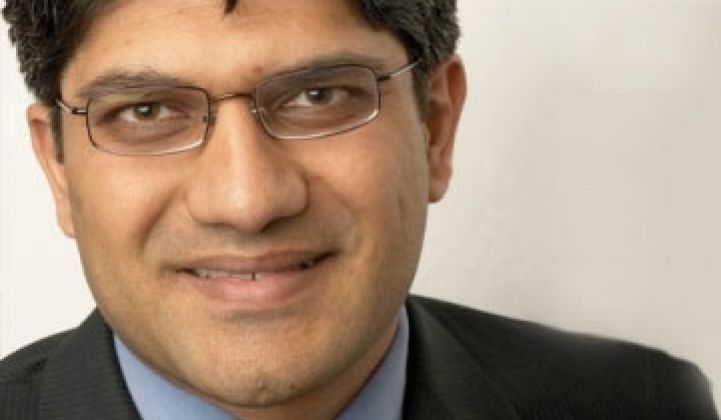Editor's note: Jigar Shah, President of CASE (Coalition for Affordable Solar Energy), contributes this post on the eve of the U.S. Department of Commerce decision on Chinese solar panel tariffs.
***
On the eve of a preliminary decision by the U.S. Department of Commerce on whether to impose anti-subsidy tariffs against Chinese imports of solar cells, the Coalition for Affordable Solar Energy (CASE) is calling on all seven members of the Coalition for American Solar Manufacturing (CASM), including the four remaining anonymous companies, to disclose a complete list of the government (state, federal and foreign) subsidies they have received over the past decade.
SolarWorld and CASM members claim that this entire debate is about fairness. As such, we expect that they will release a complete outline of the hundreds of millions of dollars in government support they have received in countries like Germany, Italy, Qatar and the United States. Unfortunately, the U.S. Department of Commerce does not consider the hypocrisy of the petitioner or make a comparative evaluation. However, given the damaging nature of CASM’s crusade, the public deserves to know the truth about SolarWorld and the millions of dollars it has received in supply-side government subsidies.
According to public information, SolarWorld alone has received more than one hundred million dollars in direct supply-side subsidies that give the German company a competitive advantage. Although incomplete, here are some of the subsidies provided to SolarWorld:
* According to Handelsblatt, a German publication, SolarWorld has received 130 million euros in direct subsidies in Germany between 2003 and 2011.
* According to the Portland Tribune, SolarWorld received an $11 million Business Energy Tax Credit in Oregon that it immediately sold to Wal-Mart for $7.3 million in 2009. It then applied for a second round of tax credits and received an additional $19.4 million.
* According to the U.S. Department of Energy, SolarWorld was “awarded a clean energy manufacturing tax credit of $82.2 million to expand its existing 100-megawatt solar photovoltaic manufacturing plant to 500 megawatts.”
* According to PV Tech, a solar industry publication, SolarWorld received approximately $19 million in preferential export financing for projects in India.
* According to a SolarWorld press release, SolarWorld has entered a joint-venture partnership with the Qatar Development Bank, a Qatar government-backed investment bank, for the construction of polysilicon facility in Qatar.
* According to The New York Times, quoting a SolarWorld executive, the company “was in the process of obtaining $4 million in research assistance from the federal government."
* As a corporate resident in the Hillsboro Enterprise Zone, SolarWorld is entitled to a 100-percent property tax abatement for up to five years.
It’s clear that SolarWorld is one of the most heavily subsidized companies in the history of the solar industry. If its crusade is truly about fairness, we urge the company to release a detailed list of all the subsidies and tax breaks it has received globally.
SolarWorld is not the only CASM member to receive preferential government treatment, according to public records. MX Solar, a Milan-based solar manufacturer, received government incentives for its 50-megawatt manufacturing facility in New Jersey. According to a September 2011 presentation by the state of New Jersey, MX Solar was approved for $3.3 million in subsidies under the state’s Clean Energy Manufacturing Fund. In addition, the New Jersey Economic Development Authority’s Business Employment Incentive committed a broad range of financial incentives for the deal, and the company benefits from local content requirements in its home market, Italy, that exclude American products.
The third public CASM member, Milwaukee-based Helios Solar Works, has also received supply-side government subsidies, according to public sources. Helios received a $1.4 million loan from the Recovery Act funds from the Energy Department’s State Energy Program (SEP), which supports 26 jobs as of December 2011.
It’s incredibly disturbing that such highly subsidized companies can start a global trade war, damage the entire U.S. solar industry and threaten tens of thousands of American jobs by accusing their competitors of receiving subsidies. A war over subsidies in the solar industry is like a circular firing squad where everyone gets hurt.



